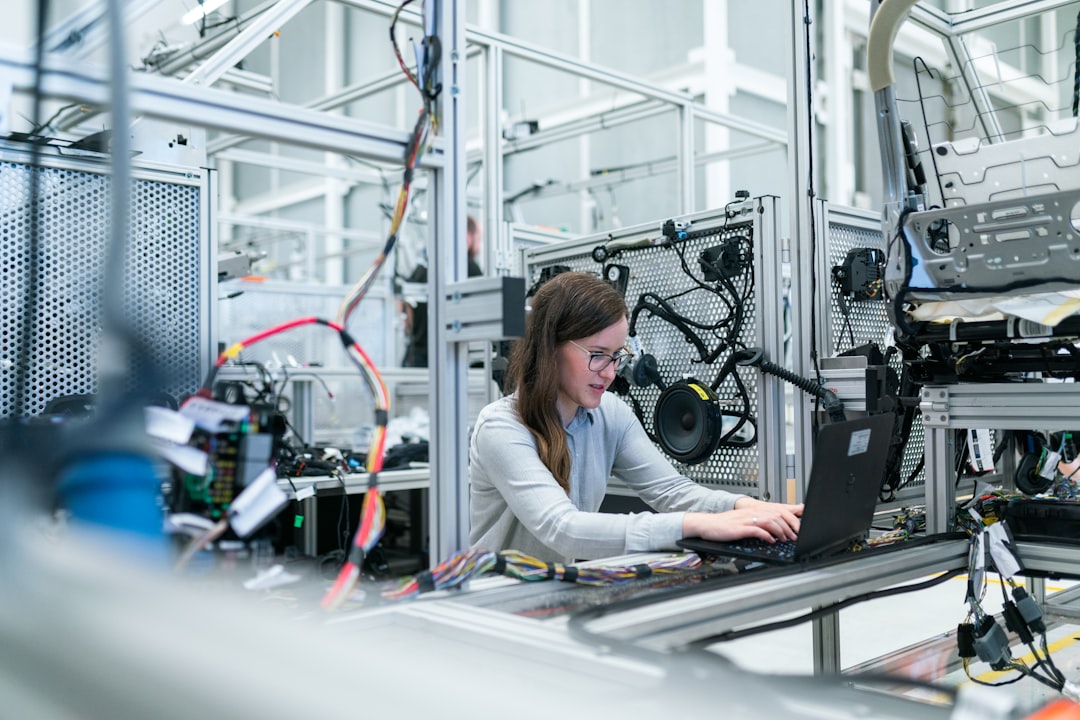Unlock encrypted content
Please enter your SSCE key to initiate on-the-fly decryption.
Decryption key: (Click cancel if you don't have the key)
Copied link to clipboard.
This feature is unavailable for free accounts. Upgrade now and enjoy all Premium benefits.
Go Premium!
This feature is unavailable for free accounts. Upgrade now and enjoy all Premium benefits.
Go Premium!
Please open this page in browser ( Google Chrome or Safari ) to use this feature.
Open In Browser
Cutting-edge Innovations in Autonomous Driving and Scalable Cloud Storage Architecture
Random related video for this blog.
Copied share link to clipboard.
This cutting-edge innovation has the potential to revolutionize transportation, making it safer, more efficient, and less reliant on human drivers. One of the key components of autonomous driving is the use of machine learning algorithms, which enable cars to analyze and interpret data from their surroundings, making informed decisions in real-time.
Machine Learning and Edge Computing
Machine learning plays a crucial role in autonomous driving, allowing cars to learn and adapt to their environment. By using advanced algorithms, these vehicles can recognize objects, predict their movements, and make intelligent decisions based on the data they collect. This technology relies on powerful computing systems capable of processing vast amounts of data in real-time. This is where edge computing comes into play. Edge computing brings the processing power closer to the source of the data, reducing latency and improving response time. In the context of autonomous driving, edge computing allows cars to analyze data locally, without relying on a centralized cloud infrastructure. This is particularly important when it comes to safety-critical decisions that require immediate action, as any delay in processing the data could have severe consequences.Scalable Cloud Storage Architecture
While edge computing is crucial for real-time processing, it is not sufficient on its own. Autonomous vehicles generate vast amounts of data that need to be stored and analyzed over time. This is where scalable cloud storage architecture comes into play. With the help of this architecture, data generated by autonomous vehicles can be securely stored, allowing for further analysis and improvement of the driving algorithms. A scalable cloud storage architecture ensures that the storage infrastructure can grow and adapt as the volume of data increases. It provides the necessary flexibility to handle the ever-growing demands of autonomous driving, allowing for seamless integration of new data sources and technologies. This architecturealso enables remote access to the data, making it possible for researchers and developers to analyze and improve the algorithms without having physical access to the vehicles.
Remote Pilot Systems and Smart Contracts
In addition to autonomous driving, remote pilot systems have emerged as an innovative solution to enhance the capabilities of human drivers. These systems enable remote control and monitoring of vehicles, allowing for safer and more efficient operations. For example, in the case of delivery drones, remote pilots can take control of the vehicle in complex situations or when human intervention is required. Smart contracts, on the other hand, are self-executing contracts with the terms of the agreement directly written into the code. These contracts are stored on the blockchain, ensuring transparency and security. In the context of autonomous driving, smart contracts can be used to define and enforce rules and regulations, such as speed limits and right-of-way. This technology can help create a more efficient and reliable transportation system, reducing the risk of accidents and improving overall traffic flow.Tesla Autopilot and Immersive Media Storage
When it comes to autonomous driving, Tesla's Autopilot system has been at the forefront of innovation. Autopilot combines cutting-edge hardware and software to enable advanced driver-assistance features. It uses a combination of sensors, cameras, and machine learning algorithms to provide a semi-autonomous driving experience. While Autopilot is not fully autonomous, it represents a significant step towards achieving full autonomy in the future. Immersive media storage is another area where cutting-edge innovations are transforming the way we experience content. With the rise of virtual reality (VR) and augmented reality (AR), there is a growing demand for high-quality, immersive media. This includes 360-degree videos, VR games, and interactive experiences. Storing and streaming these large files requires scalable cloud storage solutions capable of handling the high bandwidth and storage requirements.Conclusion
Cutting-edge innovations such as autonomous driving, scalable cloud storage architecture, remote pilot systems, machine learning, edge computing, smart contracts, Tesla Autopilot, and immersive media storage are reshaping the future of transportation and media consumption. These technologies have the potential to make our roads safer, our transportation systems more efficient, and our entertainment experiences more immersive. As we continue to push the boundaries of innovation, it is crucial to embrace these advancements and explore their full potential.Frequently Asked Questions (FAQs)
Question: How does autonomous driving work? Answer:
Autonomous driving relies on a combination of sensors, cameras, and machine learning algorithms to analyze and interpret data from the vehicle's surroundings. This data is used to make informed decisions and navigate the road without human intervention.
Question: What is edge computing? Answer:
Edge computing is a distributed computing paradigm that brings processing power closer to the source of the data. It reduces latency and improves response time, making it ideal for real-time applications such as autonomous driving.
Question: How can scalable cloud storage architecture benefit autonomous driving? Answer:
Scalable cloud storage architecture allows for the secure storage and analysis of data generated by autonomous vehicles. It provides the necessary flexibility to handle the growing demands of autonomous driving and enables remote access to the data for further analysis and improvement of driving algorithms.
Question: What is Tesla Autopilot? Answer:
Tesla Autopilot is an advanced driver-assistance system that combines hardware and software to provide a semi-autonomous driving experience. It uses sensors, cameras, and machine learning algorithms to enhance safety and convenience on the road.
Question: How does immersive media storage work? Answer:
Immersive media storage involves storing and streaming large files such as 360-degree videos and virtual reality experiences. It requires scalable cloud storage solutions capable of handling high bandwidth and storage requirements. For more information on scalable cloud storage architecture and secure file transfer, visit FileLu.
By Amelia Isabella
Email: [email protected]
Related
Intuitive File Collaboration Interfaces: Enhancing Productivity and Efficiency
June 21, 2023
Read More
The Transformative Impact of Technology on Society: From Renewable Energy...
October 17, 2024
Read More
Popular
The Future of File Storage: Exploring Cryonics, Transhumanism, and Advanced...
September 7, 2025
Read More
The Future of Cloud Storage: Innovations in Scalable Storage, Synchronization,...
September 10, 2025
Read More
Revolutionizing Data Management: Innovations in Storage, Security, and Sustainable Technology.
September 24, 2025
Read More
The Future of Technology: Data Privacy, Self-Driving Cars, and Hybrid...
September 21, 2025
Read More
Exploring the Future of Data Management: Security, Efficiency, and Cognitive...
September 28, 2025
Read More
The Future of Data Storage: Exploring Advanced Encryption, Mobile Integration,...
October 5, 2025
Read More
Latest
The Future of Data Storage: Exploring Advanced Encryption, Mobile Integration,...
October 5, 2025
Read More
Exploring the Future of Data Management: Security, Efficiency, and Cognitive...
September 28, 2025
Read More
Revolutionizing Data Management: Innovations in Storage, Security, and Sustainable Technology.
September 24, 2025
Read More
The Future of Technology: Data Privacy, Self-Driving Cars, and Hybrid...
September 21, 2025
Read More
The Future of Cloud Storage: Innovations in Scalable Storage, Synchronization,...
September 10, 2025
Read More
The Future of File Storage: Exploring Cryonics, Transhumanism, and Advanced...
September 7, 2025
Read More
Innovations in Cloud Storage and Data Management: Navigating the Future...
September 3, 2025
Read More
The Future of Technology: Integrating Virtual Reality, Autonomous Driving, and...
August 27, 2025
Read More
The Future of File Management: Innovations in Data Sovereignty, Security,...
August 24, 2025
Read More
The Future of Data Management: Exploring Innovations in Robotics, Genetic...
August 20, 2025
Read More
The Future of Data Management: Exploring Efficient Technologies in File...
August 13, 2025
Read More
The Future of Technology: Exploring Innovations in Artificial Intelligence, Data...
August 10, 2025
Read More
The Future of File Management: Exploring Cloud-Based Backup, Video Storage,...
August 6, 2025
Read More
The Future of Data Storage: Exploring Transhumanism, File Management, and...
August 3, 2025
Read More
The Future of Technology: Innovations in Electric Vehicles, Data Migration,...
July 30, 2025
Read More






















